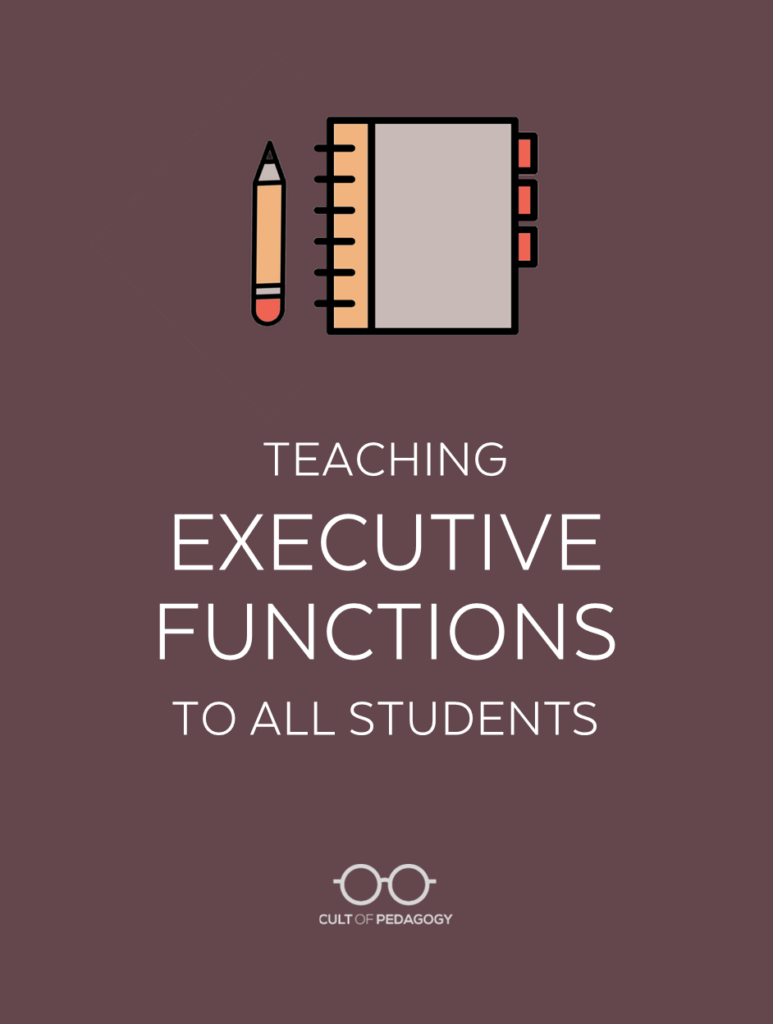
Listen to my interview with Mitch Weathers (transcript):
Sponsored by EVERFI and The Wired Classroom
This page contains Amazon Affiliate and Bookshop.org links. When you make a purchase through these links, Cult of Pedagogy gets a small percentage of the sale at no extra cost to you. What’s the difference between Amazon and Bookshop.org?
Most of my teaching experience was in middle schools, so I spent a lot of time with kids who were going through one of the most tumultuous transitions of their lives. As they moved from an environment where adults structured every moment to one with much more autonomy, quite a few of our students struggled to manage their time, their attention, their belongings, and their energy in a way that helped them do school successfully. They would forget to do assignments. Lose whole notebooks. Show up to class empty-handed. Every day after they rushed out at the end of the school day, the halls were littered with abandoned pencils, folders, calculators, books, and papers … so many papers.
And while many of them managed to figure this stuff out eventually, we always had a group who didn’t, who accumulated a series of blank spaces in the gradebook, whose lockers and backpacks were pure chaos, and whose performance on assignments and assessments regularly put them at the very bottom of the class. We would have meetings with these students where we urged them to “get organized” and “keep up with their work.” Sometimes we’d help them clean out their lockers or set up a system where they had to write down their homework in their assignment book and get it checked by every teacher throughout the day, and sometimes those interventions worked for a while, but looking back, I don’t remember any of it being particularly effective.
I also remember something else: Collectively, as teachers, we could be pretty judgy about those kids. When we discussed their issues, you’d hear things like “That kid is a mess” and “She just doesn’t keep up with her things,” or even “He doesn’t care about school” or “She’s not motivated.” The underlying belief, whether we realized it or not, seemed to be that if these kids wanted to do better, they would.
Back then we didn’t know the term executive functions, which is a set of skills we all use to control our attention, initiate tasks, manage time, and keep ourselves organized. Some of us pick up these skills from the people around us, some of us develop them naturally, and some of us really struggle with them. Fortunately, educators are becoming much more aware that whether or not a person has mastered executive functions has nothing to do with their character, and that in fact, these skills can be and should be taught, not only to students who demonstrate a need for them, but to all students.
The challenge with teaching these skills, however, is time. Teachers already have enough to do without adding more to their plate, so a whole separate curriculum on executive functions wouldn’t be realistic.
That’s where Mitch Weathers comes in.

Weathers has developed a system for embedding executive functions into any teacher’s regular schedule. It doesn’t take a lot of time, it’s not particularly difficult to learn, it leaves plenty of room for teaching your regular lessons as planned, and rather than being “one more thing,” it should make it more likely for students to absorb your material and do well in your class. He shares this system in his new book, Executive Functions for Every Classroom (Amazon | Bookshop.org), and after reading it, I’m a big fan. As I was reading, the thought that kept occurring to me was man, if everyone did this, so many kids would do so much better in school, and they’d enjoy it more too.
On the podcast, Weathers gives us an overview of how his system works. You can listen to the episode on the player above, read the full transcript, or read my summary below.
The Case for Teaching Executive Functions to Everyone
If only some kids struggle with executive functioning skills, why teach it to all students? In our conversation, I mentioned that in my experience, I had most often seen these skills taught to students who had IEPs, students who spent some part of the day in a resource room with a teacher who would set aside time to work on these skills. While this extra support seemed to get good results, it didn’t reach everyone, because many students who struggled with executive functions didn’t have IEPs.
This resonated with Weathers and illustrated exactly the problem he’s trying to solve — treating executive functions as a Tier 2 or 3 intervention, when they really should be Tier 1. (This is in reference to the Multi-Tiered System of Supports framework, where a Tier 1 intervention is taught to most students and is considered proactive, whereas higher tiers — 2 and 3 — are set aside for smaller groups of students who need more support.) He argues that by teaching these skills to all students, we reduce the cognitive demand on everyone, thus freeing up more “mental calories” to be used on academic growth. We also take some of the strain off of those who provide tier 2 and 3 interventions.
His original inspiration came from the large population of multi-language learners he worked with early in his career. Watching the effort it took for them to just get through a school day made him start searching for solutions.
“At the end of the school day,” he says, “you could just see a fatigue that my students were carrying that they didn’t at the beginning of the day. When you compare that with their English-speaking peers, there’s a significant cognitive load to just navigating the school day. If I’m using a significant number of mental calories just trying to translate everything I’m learning, going class to class to class with different expectations, different routines, different curriculum, you’re just — that bandwidth is diminished.”
He started his daily routine with his own students, and when it worked well, the system caught on across the ninth grade the following year. Eventually he made his system available to anyone through his Organized Binder program, and now through his book.
The System
Weathers’ system is built around a daily routine that happens in the first few minutes and the last few minutes of a class period. He is careful to point out that this is not a curriculum, that it’s not extra content to be taught. “Because if it is,” he says, “teachers are not going to be able to fit it in.”
This system layers right on top of a normal class period — a few minutes at the beginning and a few minutes at the end. In the middle is teaching a lesson however you might normally do it. Here’s what the steps look like:
Step 1: The Kickoff
This is a low-stakes prompt that gets students to engage with previously learned material. This brief retrieval practice activates their working memory and prepares them for the day ahead. Students record all of their responses to these on a form called the Weekly Lifeline, where they also record their end-of-class reflections:
If this sounds like a bell-ringer to you, you’re not wrong, but unlike typical bell-ringers, which students are expected to do as soon as they walk in, this one doesn’t start until everyone is ready to begin together.
Weathers explains why he made this shift: “What I typically see is that prompt is available for students the moment they enter the learning space. And what I started to recognize is one, I would have students that would show up early, so they would start and try to get to the next step of the routine. Then there were students who were coming from a further part of the campus, and they were still on time or maybe showed up tardy. I had created a scenario where, because we all arrive at different times, we’re all in different places.”
By starting everyone at the same time, after the bell rings, they all engage in the work of learning together. In the minutes before that, students are sharpening pencils and getting their binders — Weathers’ system relies on students keeping certain items (which you’ll see below) in a 3-ring binder. He calls this time “the work of getting ready to learn as opposed to the work of learning.”
Step 2: Agenda
In this step, the teacher takes a minute to introduce the plan for the day, and students write it down in a chart like the one below.
“For many students,” Weathers says, “life outside of school is anything but predictable, and it can even skew towards chaotic. And so the more predictability I can bring for those kiddos, the better. It has a profound impact, just taking a moment to introduce the lesson and students are creating a log of that. It helps students who are absent know exactly what we did, and there’s another piece there: Every teacher at the beginning needs a little bit of time for business.”
Weathers encourages teachers to use this time to model the skill of keeping a calendar, an essential life skill that many people are never taught.
Step 3: Table of Contents
At this point, the teacher distributes any handouts, resources, or returned assignments to students for the day. These go into the binder and are recorded on the table of contents, a sheet at the front of the binder that itemizes everything behind it.
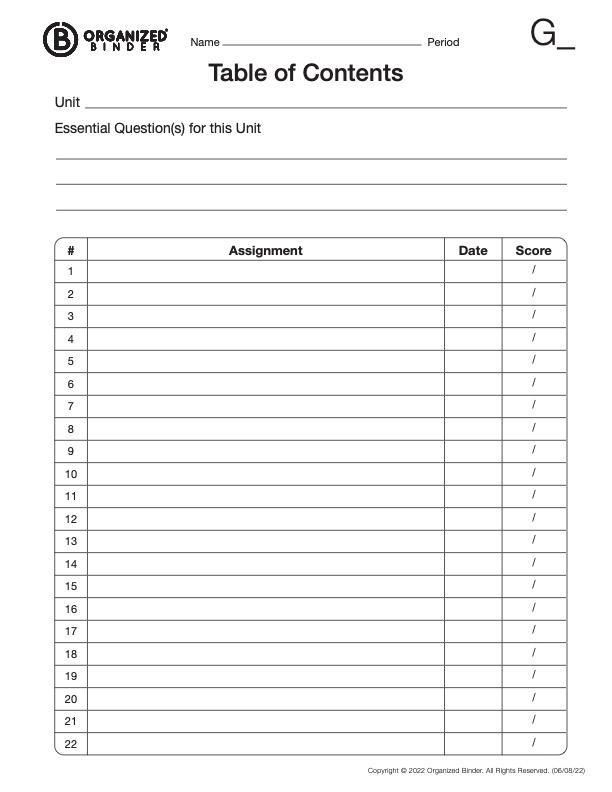
Pages in the binder are organized chronologically, rather than by their function. Weathers used to have students organize their materials in a more typical way — with sections for notes, homework, quizzes, and handouts — but he found that this kind of system didn’t serve him or his students.
“I’d get to the end of a unit,” he says, “and we’d have our summative assessment or project due date or something, and all of this stuff was disjointed. And I was like, there’s no cohesion here.” Because units are often taught thematically, Weathers felt that all materials for a unit should be grouped together in the order in which they were presented, with each item assigned a number. This system makes it obvious when an item is missing, which helps students keep track of all their assignments.
This is a good time to mention that the teacher keeps a class binder that is an exact model for what students keep in their own binders; this is an important resource for students when they return from an absence.
Once the unit is complete, the papers and table of contents can be bundled together and filed away so the binder is fresh for the next unit.
Step 4: Academic Toolkit
The academic toolkit is a separate section in the binder where students keep resources that are used year-round, things that are not tied to any particular unit. This “step” in the system doesn’t show up every day, only on days when something is being introduced to that toolkit or when students will need to access something from it. Otherwise, the class moves directly to the next part:
Next: Teach Your Lesson As Normal
All of the above steps just take a few minutes to complete. When they’re done, the teacher can begin whatever lesson they have planned for the day. This is the beauty of Weathers’ system: It not only takes very little time away from the class period, but because it gets them organized and activates their working memory, it also sets students up to learn better during the lesson, and that lesson takes up the bulk of the class period, as it should.
Step 5: Concluding Routine
In the last few minutes of class, students go back to the same sheet they used for the kickoff and write a reflection on what they learned that day.
Weathers sees this as an opportunity for formative assessment. “There is no more powerful formative feedback than communication with a student one on one,” he says. “And how we sell it to students is this is a private one on one conversation between you and I. If you need help, this is where you can tell me.”
“I Got This.”
Weathers has been using this system for so long that some of his previous students are now teachers who use the Organized Binder system themselves because they have experienced how well it works. He attributes this not just to the academic success it can bring, but the way the skills build confidence.
“As a byproduct of participating in this learning routine with my peers,” he says, describing the student experience, “I get practice with and see modeled these executive functioning skills. So not only do I have this sense of, like, I know what to do here, right, I know what to do to participate and look like everyone else in the class and I’m engaged. That feels good, there’s no doubt. But as I’m honing those skills, there’s an agency — I like to use the word dexterity — kind of like, I got this. And what I love for us to remember is we’re not talking about grades or test scores or content or curriculum, the stuff we’re learning. It’s about developing learners, their capacity and laying that foundation.”
To learn more about Weathers’ system, visit Organized Binder.
Join our mailing list and get weekly tips, tools, and inspiration that will make your teaching more effective and fun. You’ll get access to our members-only library of free downloads, including 20 Ways to Cut Your Grading Time in Half, the e-booklet that has helped thousands of teachers save time on grading. Over 50,000 teachers have already joined—come on in.

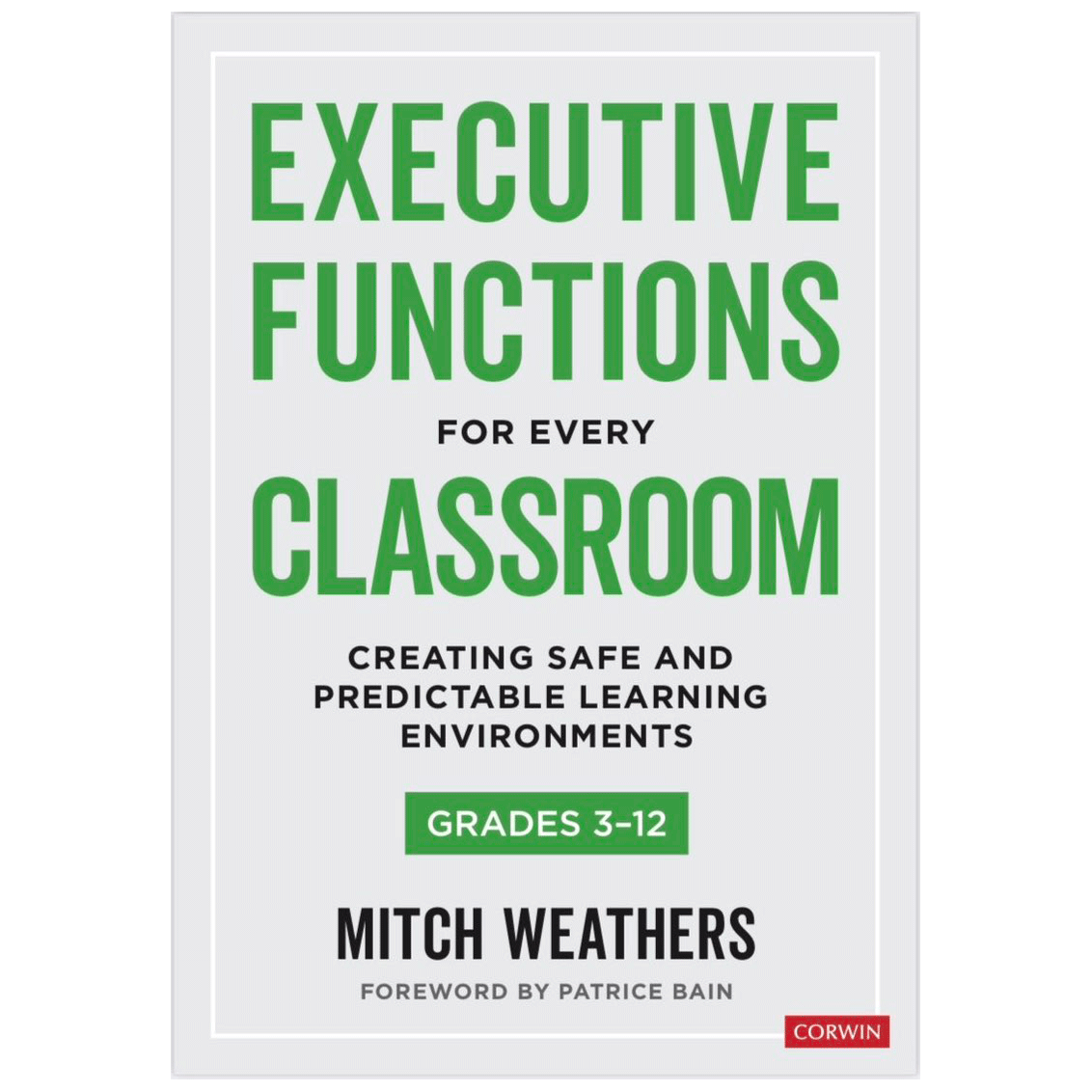
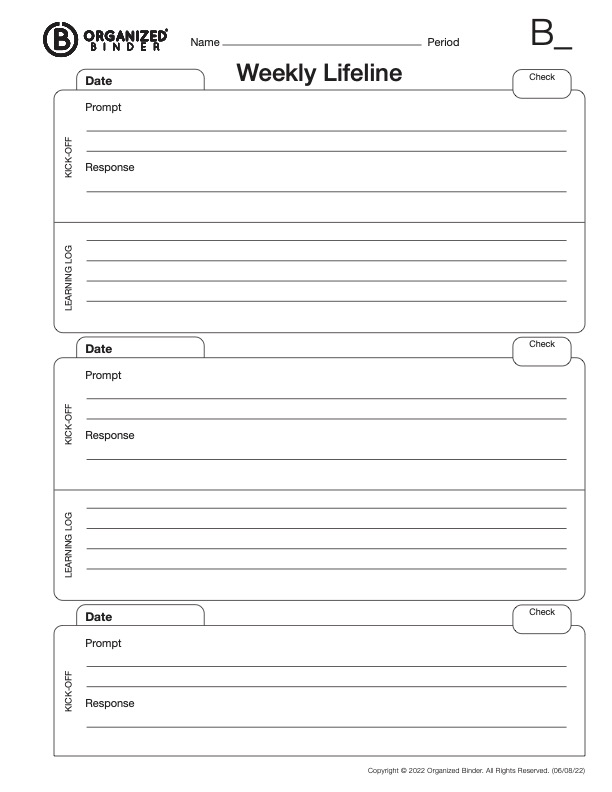

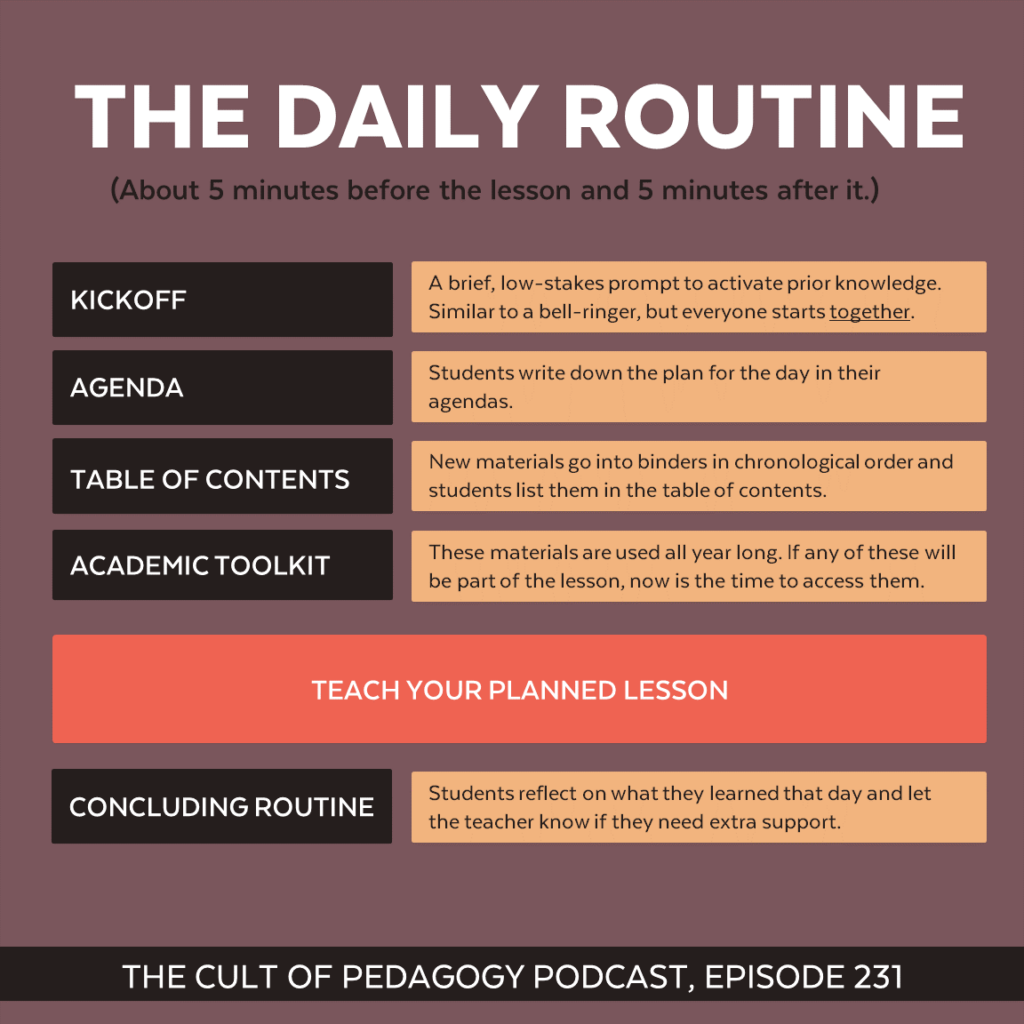




Are students responsible for bringing their binders to class or are they kept in the classroom? If students bring them home and back to school the next day, how do you handle those students who forget to bring it? Alternatively, keeping 125 binders in a classroom may not be feasible.
Hello Seth, great question.
This is usually a site-specific decision as some schools have lockers and other don’t. Some classrooms can accommodate storing binders while others don’t have that capacity.
To your point, we do not want students carrying 4+ binders, especially has the begin to hone their organizational skills and the binders fill up.
The most common solution for teachers, especially if students are using Organized Binder in multiple classes, is to get creative with storing them in the classroom.
We have some fun examples of how teachers have accomplished this, shoot me an email if you want to see those and/or chat further about this.
But great question!
This is excellent, thank you for sharing it with us. I am wondering whether you have any suggestions regarding adjustments that could/should be made if students are working primarily in a digital space (with a learning management system or other digital resources/programs)? Thank you!
Hello Ashlee,
This is a great question.
I would love to learn more about the digital environment your students are working in to respond with more specific suggestions. You can reach me here: mitch@organizedbinder.com.
With that said, I encourage teachers to consider “blending” digital and analog resources/tools. I believe it is not an “either / or” approach but identifying the right tool for the job.
For example, in a learning environment where student have both analog and digital assignments, first getting organized in the analog world can inform digital organization. The same holds true planning and time management.
Please do reach out and we can chat further. I have A LOT to share as I have taught in a fully online, self-paced, async, independent study environment and all of my students used a physical Organized Binder. It was the perfect blend that yielded amazing results! I’d also love to share insights into the power of actually writing things down.
It is about the blend.
I hope that helps!
Mitch
I have been in search of an organizational system that works for years, and yours seems perfect!
What does students accountability look like when it comes to your binders? Do you do binder checks through out the year?
Thanks so much for sharing!
Hello Paula,
Thank you so much for leaving this comment.
Yes, teachers schedule routine checks to be sure that student binders look exactly like the class sample.
It is pretty easy to do binder checks, they take very little time, but absolutely critical if students are to hone their EFs.
If you tuned into the podcast, you may recall Jennifer saying towards the end of our conversation that there was a lot more to discuss – this was one of those topics. 😉
Reach out and we can chat further. You can get me at: mitch@organizedbinder.com.
Thanks again for your comment,
Mitch
Hey, I did purchase and read a copy of your book and am interested in trying this organizational system for my hs English class. I think my concern is that students will be copying the opening prompt, the agenda , and then indexing any handouts all up front in beginning of the lesson. Wondering if it will be too time consuming , especially with a good amount of ENL students?
Ken,
First and foremost, thank you so much for reading my book. As a fellow teacher, that truly means the world to me!
You ask a really good question regarding time at the beginning of the class period, in particular with Multi-language kiddos.
I have a lot to share on this topic. Teachers can expedite the time spent at the start while being sure students are given authentic daily retrieval practice while giving teachers opportunities to clear up misconceptions and receive valuable formative feedback.
A few things to consider:
1. Move slow to move fast: At first, before students know and rely on the routine, it will take more time. But once they know the rhythm of the day the pace can pick up.
2. Consider the Kick-Off Prompt: Often, what extends the time spent at the start of class is the teacher’s prompt. My recommendation is that this Kick-Off be a concise, short, and specific prompt that promotes retrieval. If the prompt is too long or too involved it will take more time.
3. Sometimes the time is well spent: Even with a concise prompt, one that is aligned to previously learning standards or lesson objectives, the Kick-Off can take longer than anticipated. This is typically the result of the class discussion that results. I have always seen this as time well spent, even though I may need to adjust my lesson plan. One thing to consider, if the class did not engage in that reteach to clear up student-misconceptions, should the class be moving forward at all?
4. Brief Agenda and Table of Contents: Similar to creating concise Kick-Off Prompts, brevity is a teacher’s best friend when it comes to the daily Agenda and the titles of the assignments and resources indexed on the Unit Table of Contents.
Ken, there is more to consider if you find that the beginning routine is taking too much time. Strategies like pre-populating, providing printed versions for specific students as they walk into class, and more.
I’d love to find a time to meet with you to discuss the beginning routine if you are interested. Find me here: mitch@organizedbinder.com.
I hope this helps bring some clarity,
Mitch
I really enjoyed the breakdown of this method. I think each piece is often used in classrooms prior to lessons, but maybe not in an intentional way. By taking a step back, being intentional in how we are introducing content, assignments, resources, etc to students, we are helping to aid them in developing their executive functioning skills!
I currently serve as a 9th grade teacher, and while they are technically in high school, I often say that I have middle schoolers until about second semester. Students don’t just magically become high schoolers, they have to be taught how to be students in a new building, much like how skills like these have to be continually taught to them!
Intentionality is the key to doing so many things well as teachers. Glad you’re taking responsibility for teaching your students the skills you think they need to know!
Hi Jennifer,
Thank you for this interesting review about using organized binders in class. I think it’s an excellent idea and will help students stay organized with the overwhelming amount of resources they are receiving in each of their classes. Even I get unorganized with my materials, so having the teacher/class copy was an idea I never thought about but will be incorporating into my classroom as well.
Do you know of any digital examples of using the organized binder? As assignments are becoming more integrated into computers, are there any software programs that utilize something like a digital binder? Would you use a physical organized binder alongside digital assignments and handouts?
Justin, I’m glad the post has given you some good ideas to incorporate into your classroom! If you scroll up a bit in the comments section, there is a similar question from Ashlee. You may find Mitch’s response to that comment helpful.
I love the predictability of the routine and see how this could be incredibly valuable. Because executive functions and time management are specifically discussed, are there strategies in this system that support time management aside from listing the tasks?
Thank you!
Hello Erin,
Thank you for tuning into my conversation with Jennifer, that means the world to me!
Great question about strategies that support time management.
As it appears you picked up from our conversation, the listing of tasks and/or assignments is one step, or a starting point, when learning to manage one time.
Although I believe this is a critical component there is much more that we can model when it comes to time management and truly is a combination of developing organization and time management skills, with some accountability thrown in there.
If you can carve out a few minutes, Erin, let’s jump on a quick zoom. It will be much clearer if I show you.
Send me a note at the contact tab at organizedbinder.com and we can schedule a time: https://organizedbinder.com/contact
Mitch
I really appreciate the inclusivity of this idea. I can really see it taking the mental load off of some of my students who really need the extra help with executive function, and I think it sets them up with good skills that they can bring with them into their future college/work life. I really like that it is integrated into the daily schedule of the class and works with warm ups and wrap ups most of us already have going. Thank you so much for your insight!
Thanks, Brie. Jenn will be happy to know you found the post helpful. All the best!